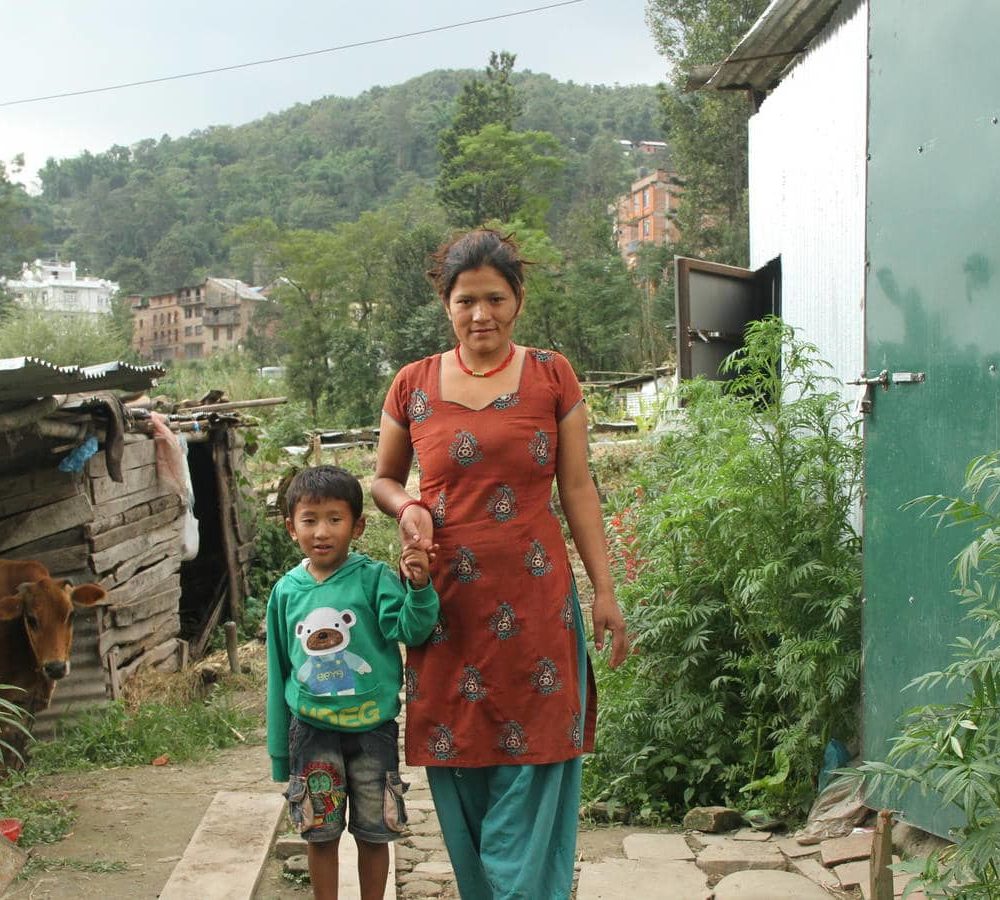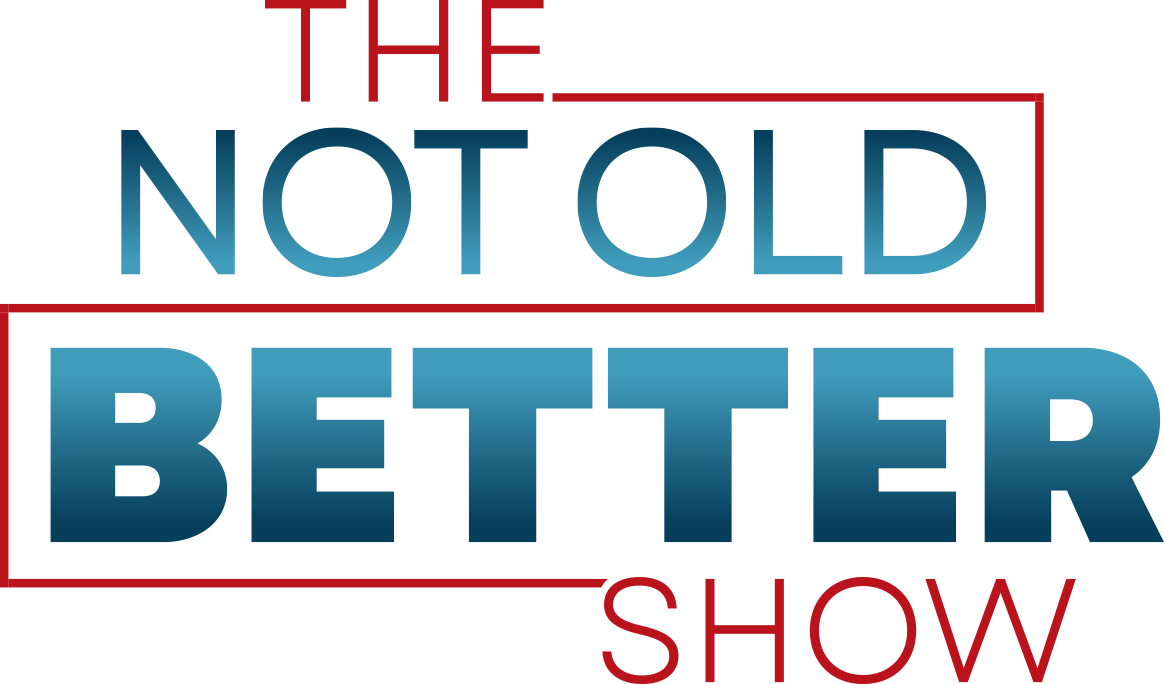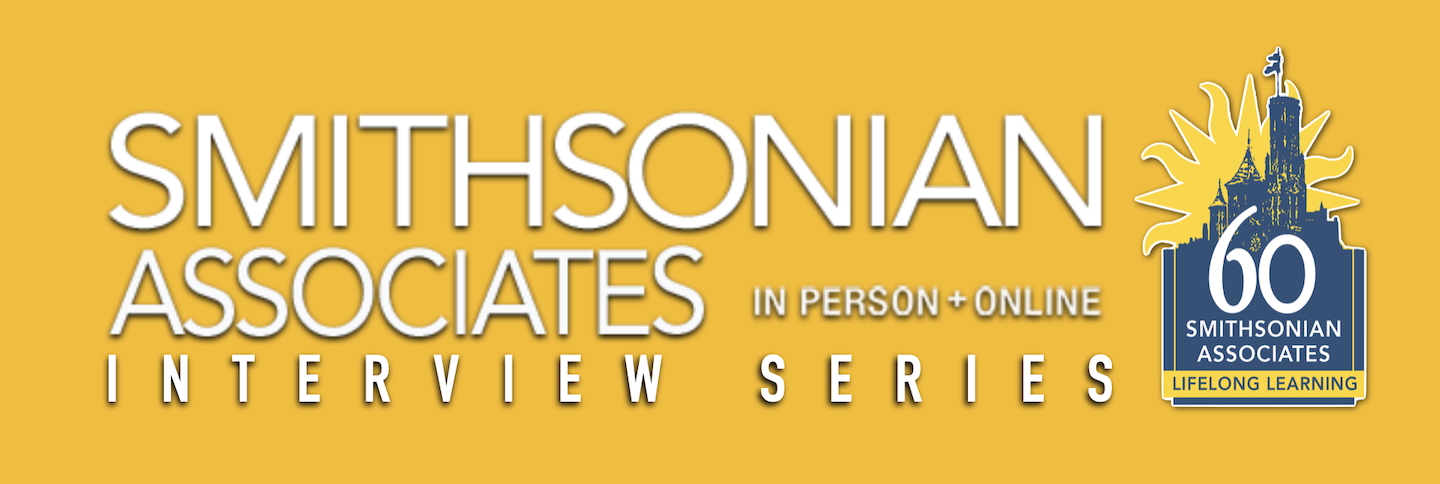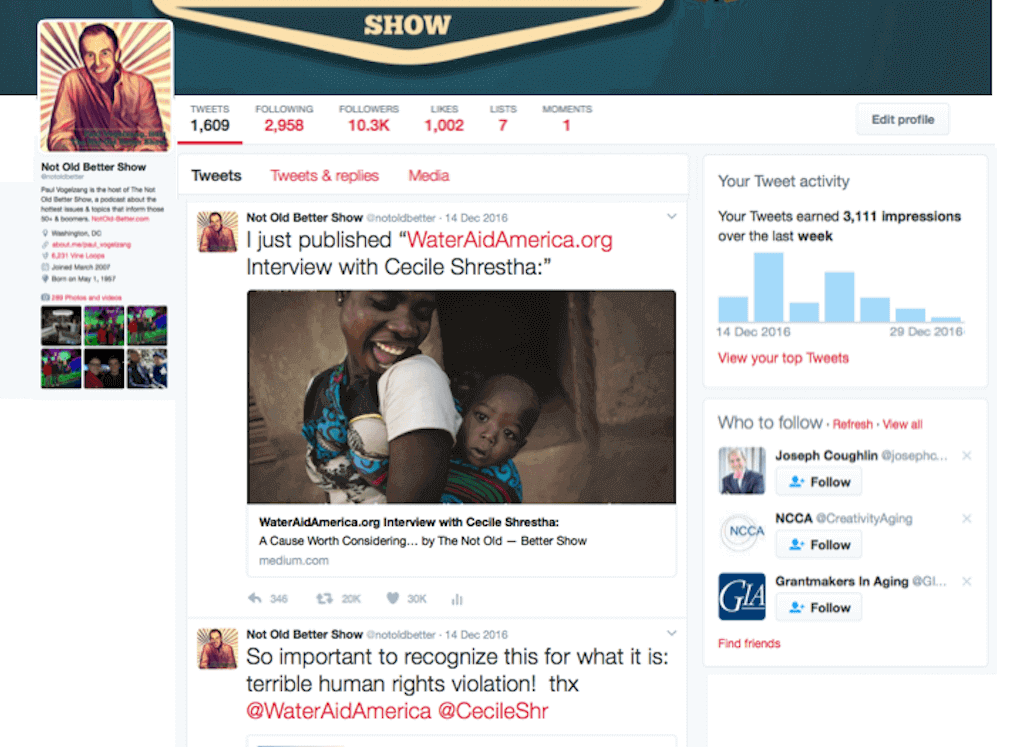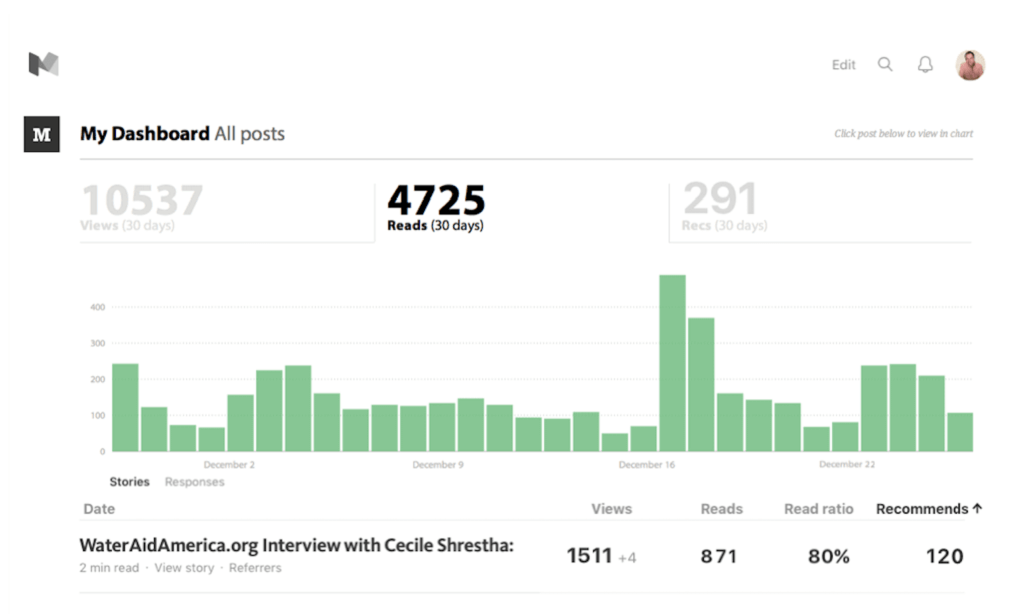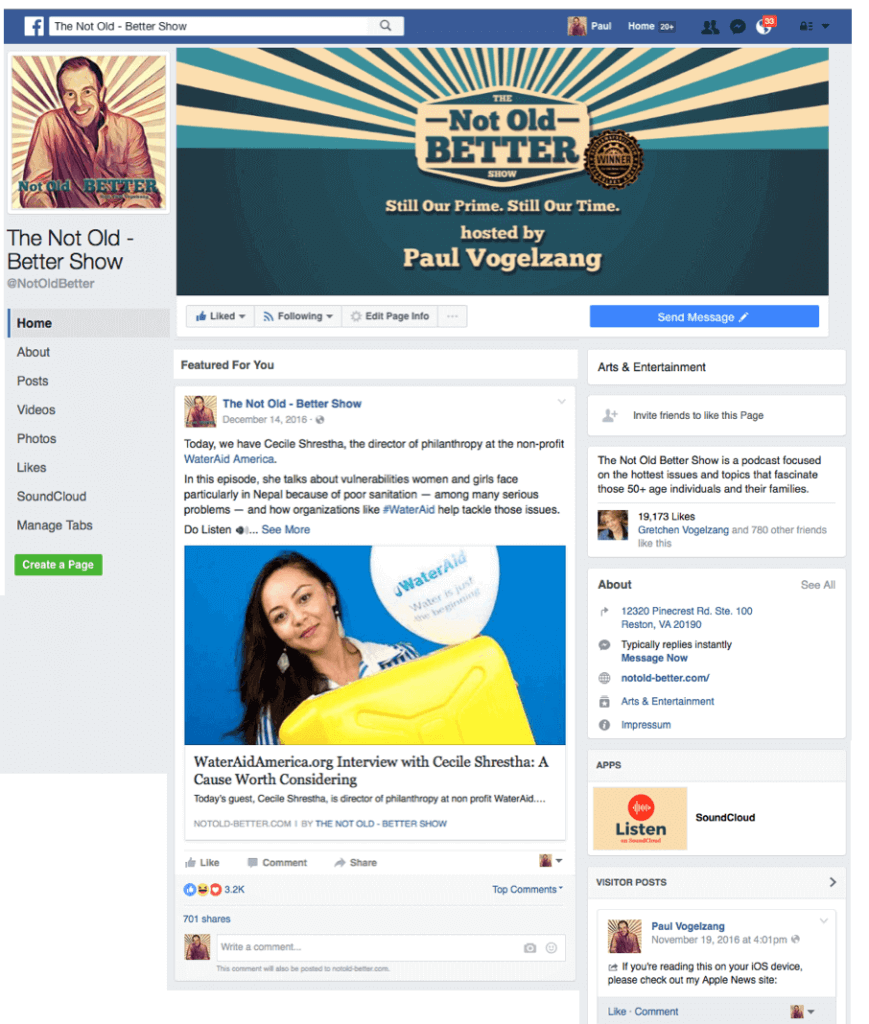
One person in three lacks access to adequate sanitation. The result is widespread death & disease – especially among children – and social marginalization. Women are particularly vulnerable. Poor sanitation exposes females to the risk of assault, and when schools cannot provide clean & safe toilets, girls’ attendance drop.
The Not Old – Better Show: Creative Entry
Case Study: Transforming Lives with Water
Please scroll down to listen to our audio case study as well as to see important facts, metrics and goal reached.
1) Introduction & Challenge:
- 650 Million people in world are living without safe, clean water. Water is a basic human right. 3 billion people, or 1 in 3 people in the world don’t have access to a proper toilet, and are without proper hygienic conditions for survival.
- Because such a significant number of the world’s people are unable to access water, even water so dirty it is deadly, and suitable latrine, toilet and refuse facilities are nowhere to be found, young girls and women must walk on average of 10 kilometers daily to find the water they and their families need to survive. Once they locate the water, these same young girls and women carry, on average, 20 kilos of water back to their homes.
- This work can take as much as 6-8 hours each day of walking and carrying. Worldwide, women and girls are more likely to live in poverty conditions and experience the negative impacts of lack of water, than men. This is equally true of lack of access to safe drinking water, sanitation and hygiene (WASH), which is both a cause and consequence of poverty and gender-based discrimination.
- Women and girls are disproportionately impacted by lack of WASH. These impacts can include fear or experiences of violence, poor health, loss of dignity and self-esteem, lack of education, and loss of livelihoods or inability to earn an income.
- In schools where there is little water and sanitation, girls often miss school to collect water or because of frequent diarrhea.
- Across the world, taboos and rituals surround menstruation.
- In remote areas of Nepal the tradition of “Chhaupadi” separates women and girls from society during their period as they’re seen as impure. They aren’t allowed to use public water sources, share food or socialize.
- Without water and proper sanitation, people in mass numbers will stay trapped in poverty for want of a tap and a toilet. Additionally, without safe water and sanitation, women and girls’ health suffers and they are subjected to humiliation from the natural process of menstruation. Water is one component, but so are regional myths, restrictions and ignorance. Menstruation is still taboo. Many women and girls are cut off socially during this time, and it becomes very difficult to access water and sanitation, just when they need it the most. Many women and girls are unable to get hold of sanitary pads and struggle to dispose of them hygienically, which can affect their health. Using rags or unwashed cloths has been linked to reproductive tract infections, as well as secondary infertility, urinary tract infections and anemia.
- During “Chhaupadi”, women and girls are not allowed to enter their homes and are forced to sleep in sheds or outbuildings. Theyhave barely any contact with their family and little protection from the elements.
- But without a clean and private toilet, menstruating girls often miss school due to pain, or embarrassment. Over time, this can impact their education and after years of struggling without toilets, menstruation can push them to drop out altogether.
- Without somewhere clean and safe to manage periods, girls miss out on vital time in school, but just a few years of basic education results makes girls more likely to have smaller, healthier and better educated families.
- Education about menstruation and simple, hygienic facilities to manage menstruation can help keep girls in school and help change their futures.
2) Agency: WaterAid.org
Mission: Transform lives by improving access to safe water, hygiene and sanitation in the world’s poorest communities. WaterAid works with partners influential decision makers to maximize their impact.
- WaterAid is the #1 ranked international non-profit dedicated to helping the people living in the world’s poorest communities gain access to clean, safe water, toilets and hygiene (WASH).
- Since 1981 WaterAid has reached 23 million with safe water. Since 2004 WaterAid has reached 21 million people with improved sanitation.
- Interview with Cecile Shrestha, Dir. Philanthropy.
- 20 staff serve US, Latin America, West Africa, Central America, Caribbean, East Africa, Asia, Southeast Asia, Southern Africa, India, and the Pacific Region. Sarina Prabasi, CEO since 2014, originally from Nepal.
- While the world’s water crisis continues, WaterAid reaches 2MM people, 2014, yearly, 71% of whom are rural, which means they’re not hearing a podcast. Those individuals can only be reached through direct work by WaterAid. Through education, government work, and partners, efforts to bring water and sanitation are increasing democratically.
- What is the challenge this agency faces? Conflict, war, mythology, paternalism, have devastated communities and left many water points and toilets in ruins.



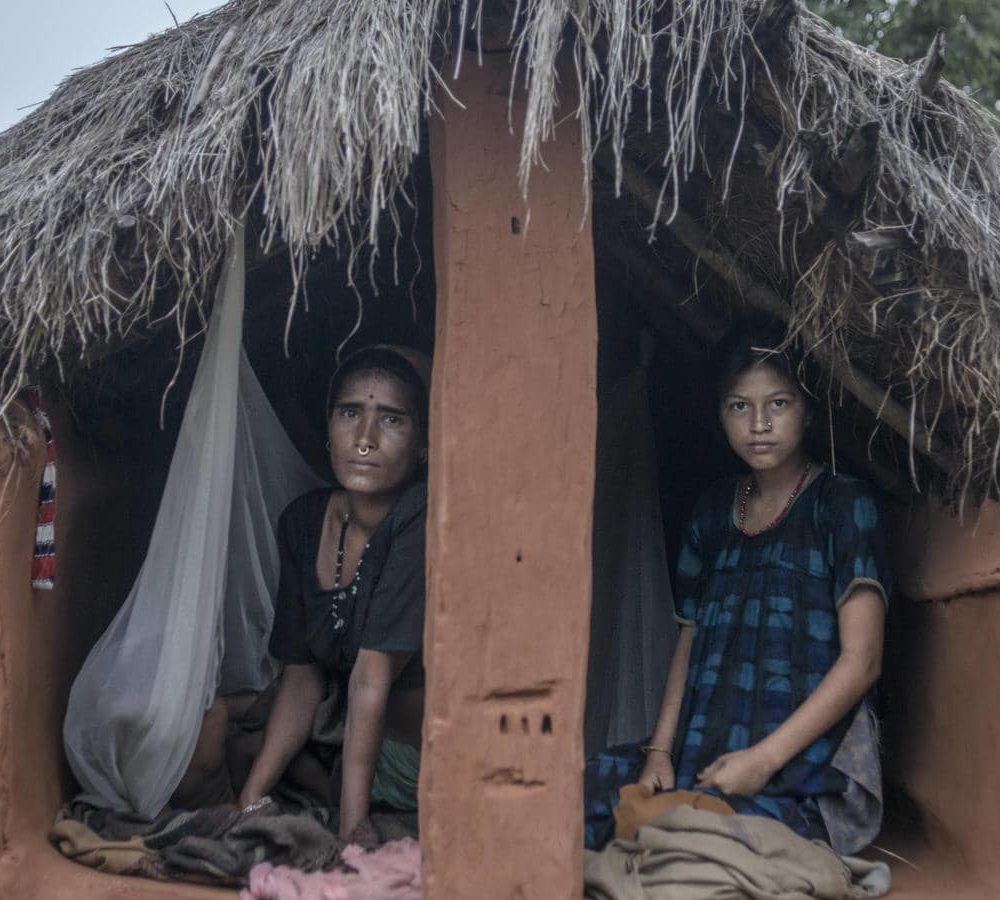
Thought provoking discussion of the issue and what problems it causes:
- Teens sharing their stories.
- Influencing others in government, United Nations, and starting conversation on this sometimes difficult subject.
- Changing behavior: Good hygiene practices such as handwashing with soap, safe use of latrines and safe storage of drinking water are essential for water and sanitation services to be e ective. Personal hygiene can be di cult to discuss, even taboo, but our partners worked sensitively with millions of people to motivate communities to change their habits.
Menstrual Hygiene: WaterAid ran menstrual hygiene management programs in 14 countries this year, helping women and girls such as adolescents at Kasasa School in Kampala, Uganda, who now have access to private, lockable rooms where they can wash and change sanitary pads.
- In Pakistan, 200 school sessions reached 3,000 girls and teachers, and in India community-based suppliers distributed a ordable sanitary pads.
Podcast: A huge part of our work is about raising awareness of the water and sanitation crisis. As a result, the profile of the issue increases and people help us build pressure on decision-makers to do more.
The Not Old – Better Show sparked a major, year end conversation that trended in the US, and the world, to generate awareness, prod government action, educate and dispel mythology. Be it those in America who rallied to WaterAid’s #Giving via The Not – Old Better show campaign on #GivingTuesday to raise US$250,000; the public rallied and raised money for maternal health, water quality, and the education efforts, WaterAid raised vital funds and spread awareness of the water and sanitation crisis.
